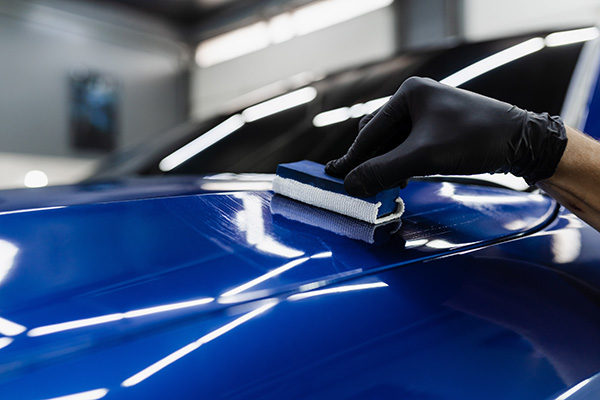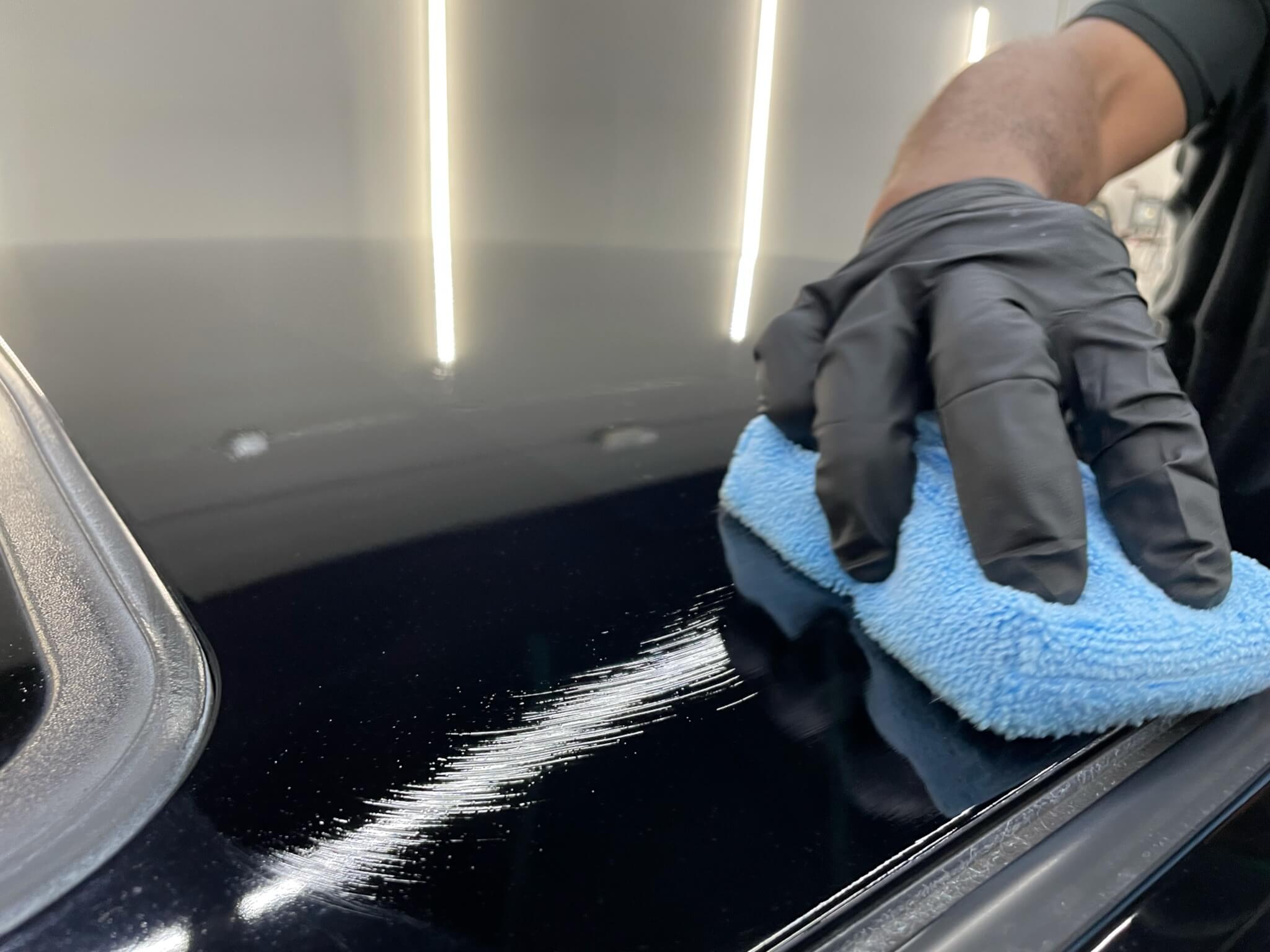How to Prepare Your Lorry for a Specialist Ceramic Coating Treatment
How to Prepare Your Lorry for a Specialist Ceramic Coating Treatment
Blog Article
The Relevance of Ceramic Coating: Safeguarding Your Cars and truck's Exterior With Precision
In a period where preserving the visual and useful honesty of your automobile is critical, ceramic covering becomes an essential service. This safety layer not just defend against environmental misfortunes however also raises the visual charm of your vehicle. With its special bonding homes, ceramic coating uses a level of security that far surpasses traditional waxing techniques. How specifically does it achieve such exceptional outcomes? As we check out the subtleties of its application and compare it to various other alternatives, one can not ask yourself however aid about the specifics that make this modern technology vital for modern auto care.
Advantages of Ceramic Coating
When it comes to maintaining a car's visual charm, ceramic finishing provides significant advantages. By developing a semi-permanent bond with the vehicle's paint, ceramic coatings effectively protect against oxidation and fading, ensuring that the car maintains a glossy, showroom-like coating for a prolonged period.
In enhancement to its safety top qualities, ceramic finish uses amazing hydrophobic properties, creating water and other liquids to grain off easily. This feature streamlines the cleaning procedure, as dirt and debris are much less most likely to follow the surface area, decreasing the frequency and initiative needed for upkeep. Moreover, the covering's resistance to chemical stains from acidic impurities like bird droppings and tree sap is one more significant advantage, minimizing potential paint damages.
Ceramic finishes also enhance scratch resistance, giving a layer that can absorb minor abrasions and swirl marks. This feature is especially helpful in preserving a pristine surface area, reducing the chance of noticeable flaws and maintaining the honesty of the car's paintwork in time.

How Ceramic Finishing Works
Recognizing the mechanics behind ceramic finishing discloses its efficiency as a protective service for automobiles. Ceramic layers are basically fluid polymer applications that chemically bond with a cars and truck's factory paint, creating a protective layer. This layer works as a barrier against ecological contaminants such as gunk, dirt, and ultraviolet rays, which can break down an auto's exterior in time. The essential component in ceramic finishing is silicon dioxide (SiO2), which originates from quartz crystals and is known for its extraordinary solidity and durability.
Application of ceramic finish involves a thorough process. This guard boosts the automobile's gloss and hydrophobic residential or commercial properties, facilitating much easier cleansing by causing water and impurities to grain and slide off effortlessly.
Additionally, the coating's molecular structure gives resistance to minor scrapes and chemical stains. Unlike waxes or sealers that sit on top of the paint, ceramic coverings incorporate with the surface, supplying lasting defense. This integration is essential to its effectiveness, making sure the vehicle's surface continues to be beautiful for many years.
Contrasting Ceramic Coating to Alternatives
In the realm of auto protection, ceramic finishing stands as a formidable choice when contrasted to traditional options such as waxes and sealers. While waxes provide a temporary lustrous finish, commonly lasting just a couple of weeks to months, ceramic coverings provide a longer-lasting remedy, frequently sustaining for several years. This longevity is attributed to the chemical bonding that happens when ceramic finishings are applied, creating this page a solid layer that is immune to ecological threats.
Contrastingly, sealers, although even more resistant than waxes, still drop short of the durable defense offered by ceramic like this coverings. Sealants can typically last for up to a year, offering a synthetic guard against certain components. They do not have the exceptional hydrophobic buildings and UV defense that ceramic finishes provide.
Moreover, ceramic finishings supply enhanced scrape resistance, which neither waxes neither sealants can properly match. In summary, while standard waxes and sealants use basic security, ceramic finishes offer an extensive, long-lasting remedy that significantly enhances and protects the automobile's exterior finish.
Application Process Described
Using ceramic coating to a car calls for a meticulous process to guarantee ideal results and longevity. The initial step includes completely cleaning up the auto's surface area to remove dirt, grease, and previous waxes. This is crucial for guaranteeing the layer adheres correctly. A pH-neutral shampoo and a clay bar treatment are typically utilized to accomplish a beautiful surface area. As soon as cleansed, the automobile is dried out and brightened to get rid of any imperfections, as any kind of existing swirls or scratches can become extra obvious after the finish is used.
Following surface area prep work, the application of the ceramic finish starts. The layer is commonly used in a climate-controlled setting to stop dirt fragments from resolving on the freshly cleaned surface. Using an applicator pad, the ceramic covering is applied in little sections to guarantee also coverage. It is necessary to comply with the manufacturer's standards pertaining to the ideal curing time and application density.
After application, the covering needs a certain curing duration, during which the vehicle must be protected from water and impurities. This healing process can vary relying on the product but normally ranges from 24 to two days. Inevitably, this in-depth procedure is pivotal in achieving a glossy and resistant finish.
Maintenance Tips for Long Life
To maintain the long life of a ceramic layer, adherence to a self-displined upkeep routine is important. Avoid automated auto cleans, as their extreme brushes can jeopardize the covering's integrity.
Post-wash, drying out the automobile with a tidy microfiber towel stops water areas that may weaken the finish gradually. Additionally, use a ceramic finish booster every few months. These boosters reinforce the hydrophobic residential properties and improve the covering's protective capacities, guaranteeing it stays effective versus contaminants.
Maintain in mind that parking places play an important role in upkeep. ceramic coating. Whenever possible, park in shaded locations to lessen UV exposure, which can progressively deteriorate the layer. For lasting storage, consider making use of an auto cover for included protection versus ecological aspects
Conclusion
To conclude, ceramic finishing functions as a crucial safety layer for automobile exteriors, providing lasting protection versus reference ecological elements such as uv, dust, and grime rays. By creating a semi-permanent bond with the paint, it improves aesthetic charm while protecting the automobile's worth. Its hydrophobic properties assist in easier upkeep, differentiating it from different protective approaches. Comprehending the application procedure and adhering to maintenance referrals are important for optimizing the longevity and performance of ceramic layer.
When it comes to protecting a cars and truck's aesthetic appeal, ceramic covering uses substantial benefits. By creating a semi-permanent bond with the automobile's paint, ceramic layers successfully stop oxidation and fading, making sure that the vehicle preserves a shiny, showroom-like surface for a prolonged period. Ceramic coverings are basically fluid polymer applications that chemically bond with an automobile's factory paint, developing a protective layer. In recap, while standard waxes and sealants supply fundamental protection, ceramic layers provide an extensive, lasting option that significantly boosts and protects the vehicle's exterior surface.

Report this page